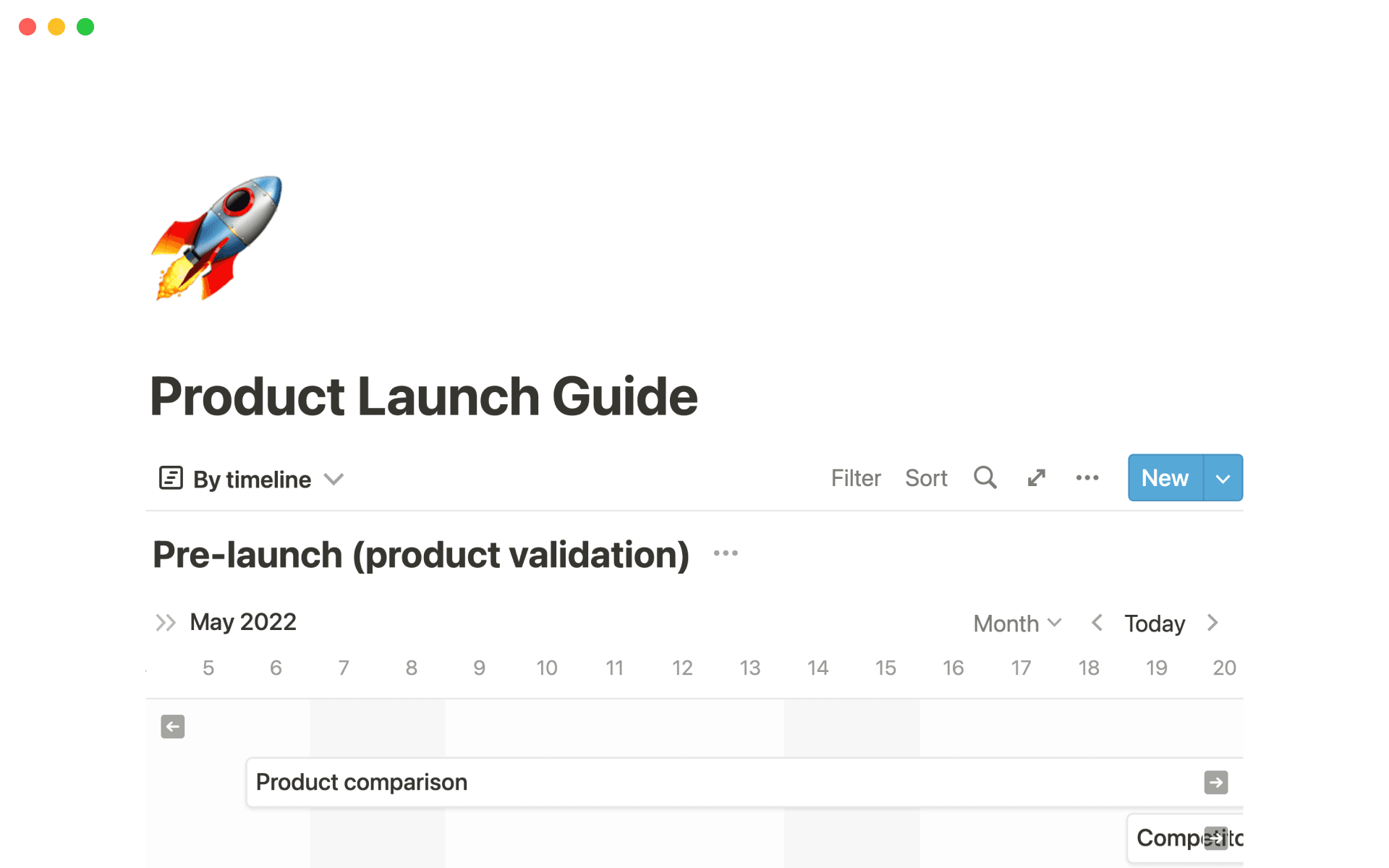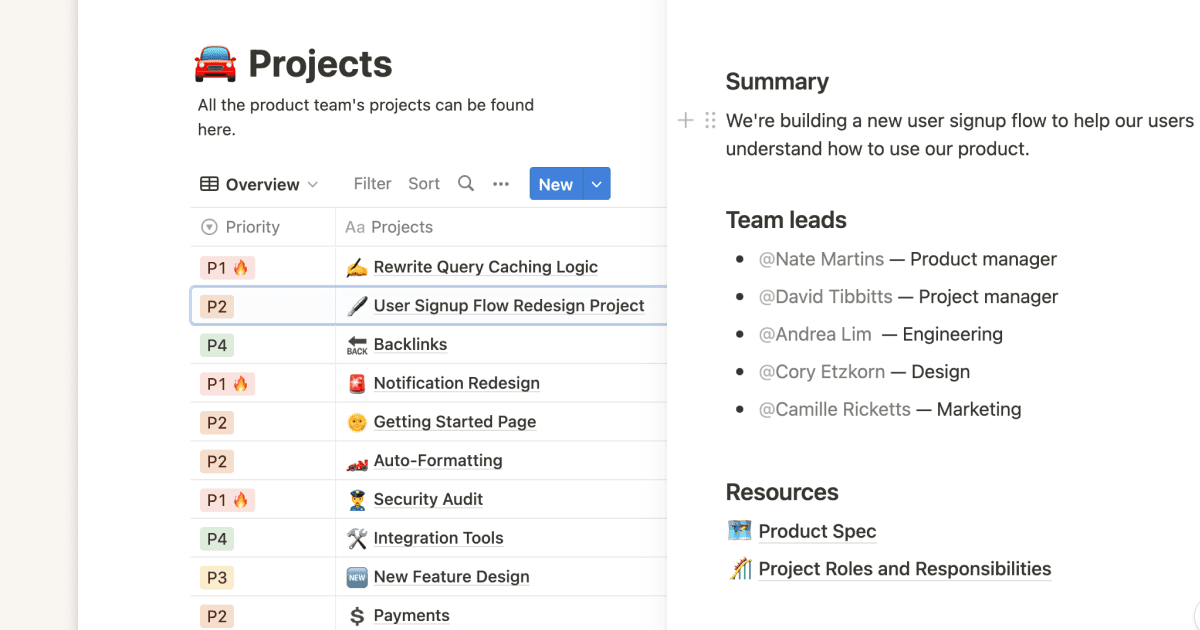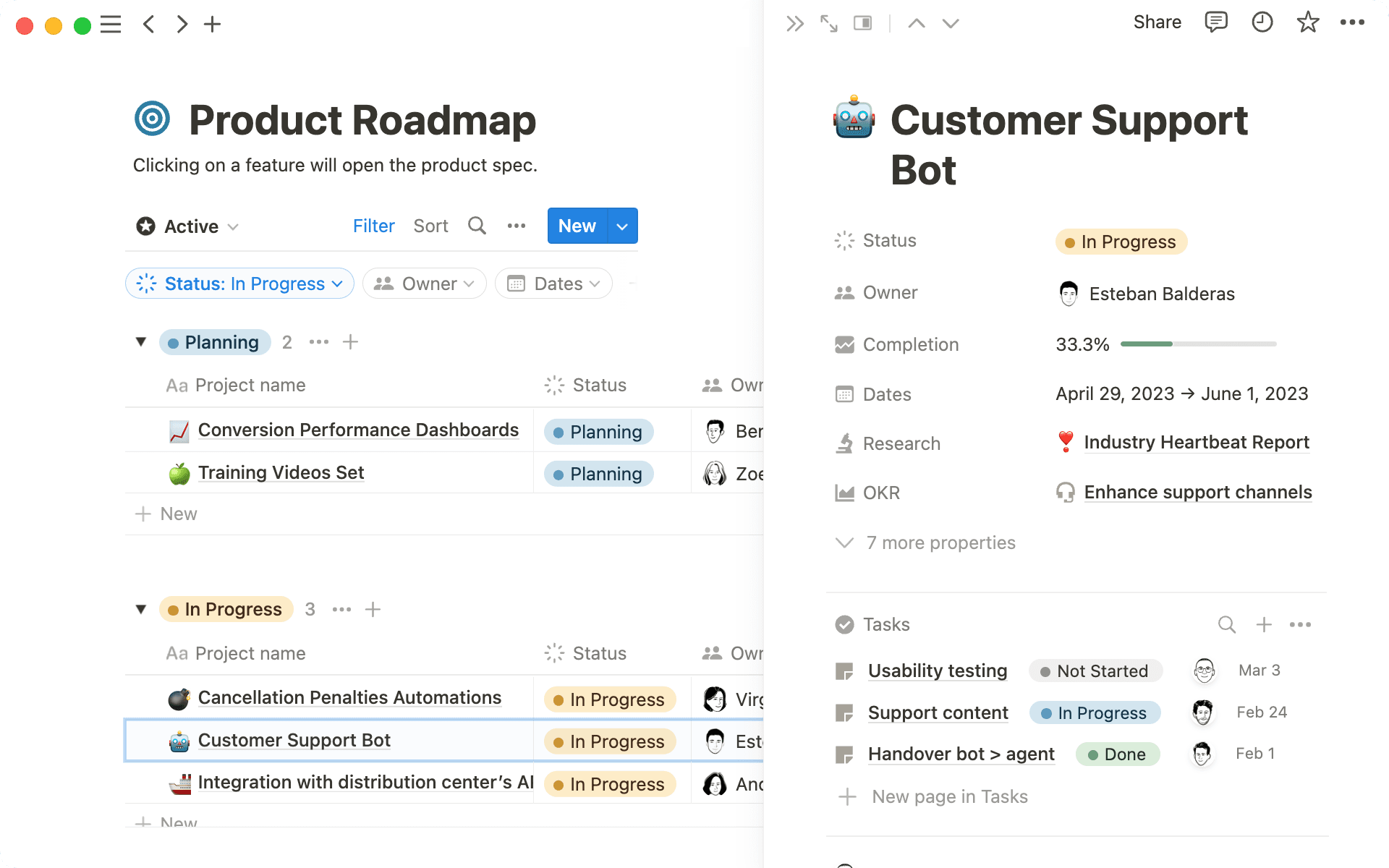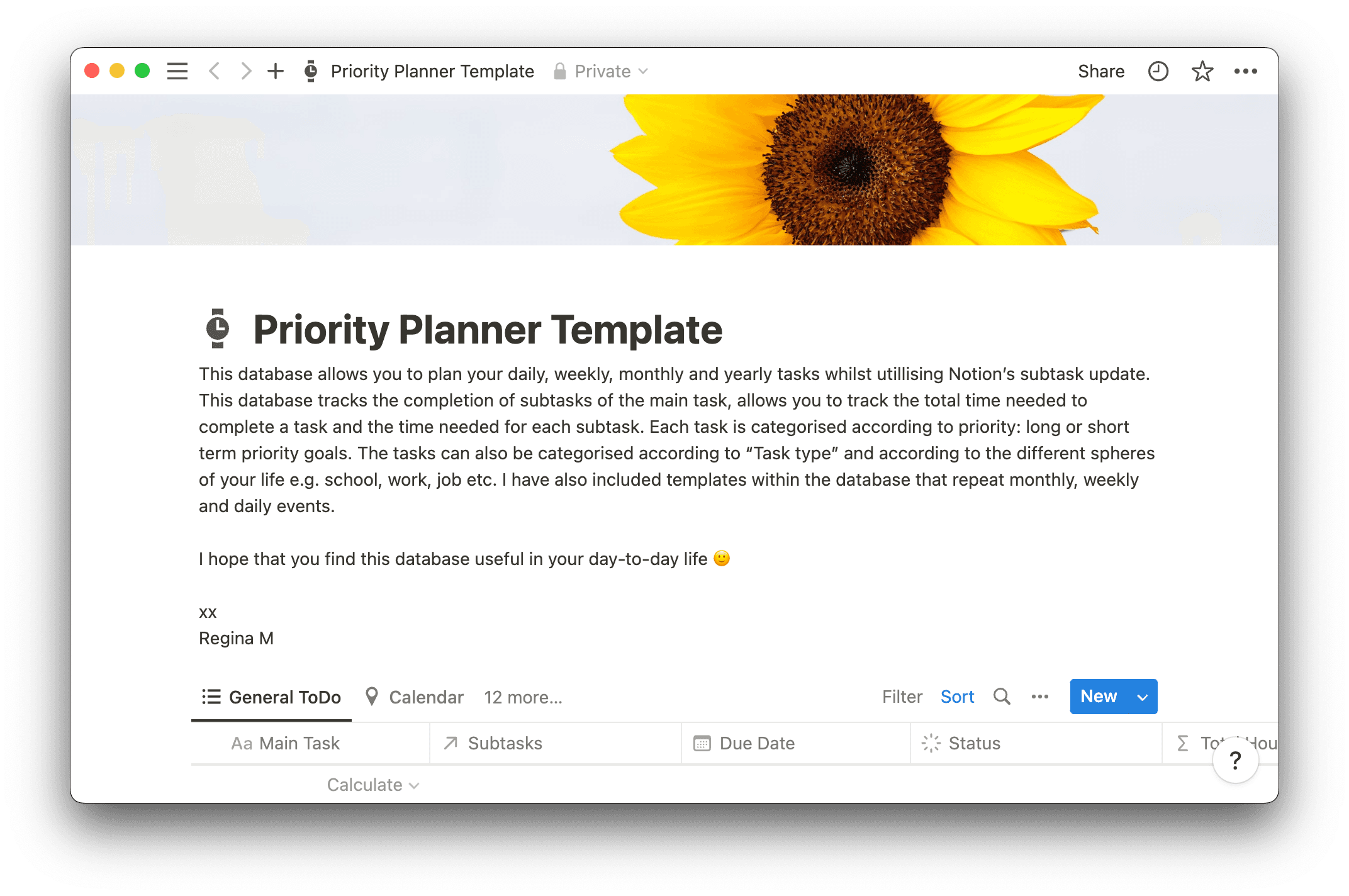These days, it feels like there’s a product to satisfy every wish — and they’re all just a click away.
While this might be the case for consumers, every product manager knows that an immense amount of effort goes into each release. Teams must research market gaps, visualize and create items, and market them effectively — all before you hit “Add to cart.” And product management is what encompasses this whole process.
What’s product management?
Product management is the supervision and organization of a product or service’s entire life cycle. Typically, a product manager and project manager take on this work. The product manager focuses on the offering’s entire process, including ensuring launch is successful and that buyers stay interested long-term. And the project manager focuses solely on product creation, organizing team tasks and resource planning.
A startup might hire one product manager — a Chief Product Officer — who oversees a single offering from start to finish. But as companies grow and their products and services expand, most companies hire product managers for different sectors and items. Here are a few common roles:
A growth product manager’s primary focus is measuring the overall growth of their business. They also tend to work closely with the marketing team to create new initiatives for expanding customer reach.
Technical product managers typically start as engineers and concern themselves with a product’s functionality, security, and digital infrastructure. They’re not usually involved in product design or marketing.
Data product managers focus on customer experience and marketing success. They’re responsible for data analytics and case management studies to showcase this success and find improvement areas.
Successfully brainstorming, creating, and launching a product is immensely tricky. And if there’s no glue between the departments that are working on this project, you risk information silos and company-wide confusion regarding the product’s purpose and execution details. The latter issue might mean employees feel less motivated to do great work, since they don’t fully understand their work’s purpose.
A product manager is the glue that holds this process together.
Product management responsibilities
Excellent product managers have expertise in three main areas: customer experience, technology, and business.
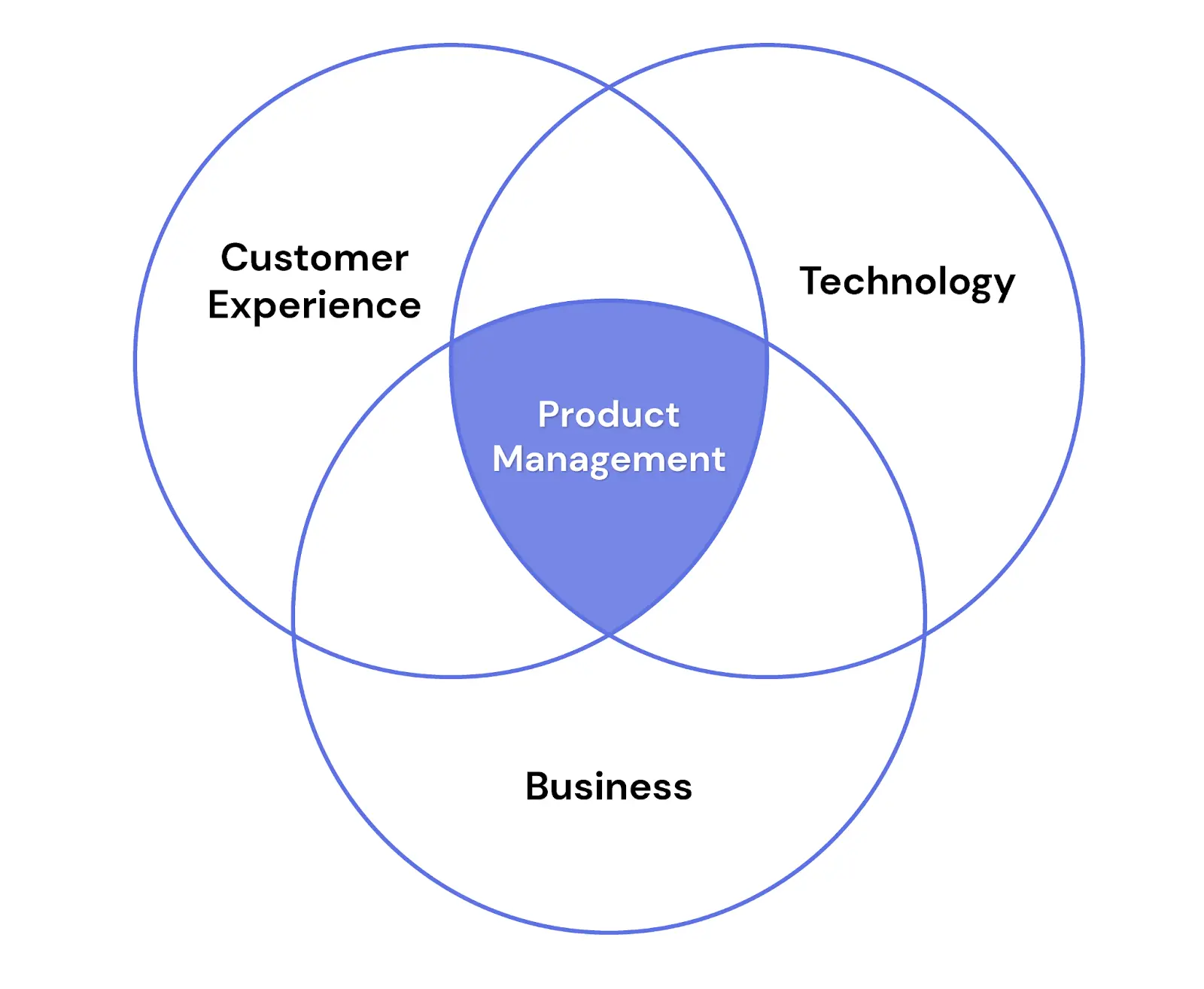
To showcase how managers leverage these skill sets, here’s what you’d likely do as a product manager:
Conduct market research — detailed customer, competitor, and market research is the foundation of any good product management strategy. Identify market gaps and create buyer personas to visualize your ideal consumer. Then find a way to create a product that fills gaps and solves persona pain points.
Develop a product roadmap — after determining how to address customer pain points, define the goals and objectives for the product team along with a workable timeline. Make this product roadmap specific by outlining specific action items and responsibilities.
Communicate with stakeholders — share the product roadmap with all relevant stakeholders, from your team to external clients to marketing professionals. Throughout development, update this roadmap, housing it someplace central so everyone stays informed and can adjust as necessary. You might also host weekly stand-ups to discuss the product development process more often.
Oversee tests and launch — from auditing prototypes to testing and pre-launch, record your findings on the product’s progress and assess beta tester and production team feedback. Adjust timelines and project plans as necessary, working closely with relevant project managers to ensure everyone’s updated and on track. Once all stakeholders feel satisfied, give the green light for market campaigning and product release to begin.
Assist with marketing campaigns — work closely with marketing team leads and project managers as campaigns unfold, helping to ensure the launch is successful. And share product success metrics with clients and C-suite execs.
Analyze data and implement changes — this ongoing process involves tracking sales, product performance, and customer feedback to see whether the product team can make any tweaks to improve the product’s performance.
The product management process: 7 steps
Like any business process, there’s no “one ring to rule them all” for managing products. But this simple seven-step workflow is a great way to create a process template all product managers can follow, making adjustments as necessary.
Throughout each step, keep the following elements in mind: the target customer, competition, profit margin, and cultural, political, and economic trends. Having these crucial factors top of mind will help you create a thoughtful and successful product.
1. Identify the problem you want to solve
Start by defining your target audience, determining information like their age, demographic, and pain points.
Then, if you already have a product idea, ask your team the following questions:
Which pain points does our product solve?
Do other products already successfully solve these problems?
Can we differentiate ourselves from any already-existing offerings?
If you don’t already have a product idea, consider these questions:
Is there a gap in the marketplace we could fill?
Is there a feature we could add to an existing product?
Could we make an existing product more accessible and affordable?
2. Align with business values and goals
Once you’ve decided on a product, align it with overarching company values and goals. Say a core value is “Increasing technological accessibility worldwide.” Make sure your offering respects this core company principle. And if a broad goal is “Increase revenue by 10% in the next three quarters,” explore how this product offering contributes to that.
3. Test possible solutions
Now brainstorm with your team to more clearly define this new product or feature. You might role-play a couple ideas to find pitfalls and bottlenecks, ultimately landing on the most promising solution. If your team is caught between several ideas, you could look at similar competitor products to see how each is performing.
4. Create your roadmap
Outline a roadmap that includes a start and end date, milestones, and specific tasks. When making this, work closely with the project manager who’ll execute day-to-day duties like checking in on tasks and allocating resources. While you chat with external stakeholders to determine necessary launch dates, the project manager can chat with the product team to assess team bandwidths and essential resources that might impact your roadmap.
Once your roadmap is complete, share it with all stakeholders, receiving and implementing feedback as necessary.
5. Build a minimal viable product (MVP)
Now comes the fun part: the production team creates a simple, functional prototype — the MVP. Once created, internally test this product through simple beta testing or user acceptance training. After internal testers confirm the product works, you might also conduct external testing, keeping company details anonymous.
6. Launch and market the product
Once you’ve worked out any kinks that were illuminated during testing, launch the product. You might do a soft launch where only a few users try it, implementing their feedback. Or, if you feel the initial tests were convincing, you could go ahead and launch to the masses.
Marketing might have already begun pre-launch to prepare your audience and read consumer interest. Now campaigns are at full speed as the marketing team uses strategic messaging and tactics to reach your target audience.
7. Track sales and metrics
Throughout product launch and beyond, assess key performance indicators (KPIs) to determine product, marketing, and sales performance. You might make product or marketing and sales strategy changes to address weak areas or note successful initiatives you can use during the next product launch.
Make product management a breeze with Notion
Effective product management is daunting without the right tools and technology. Start strong with Notion templates, like the product development process and product wiki documents. You can also learn more about successful product development on our blog. Whether you’re interested in creating a knowledge base or using a Gantt chart, you’ll learn everything necessary to improve your product management process.


